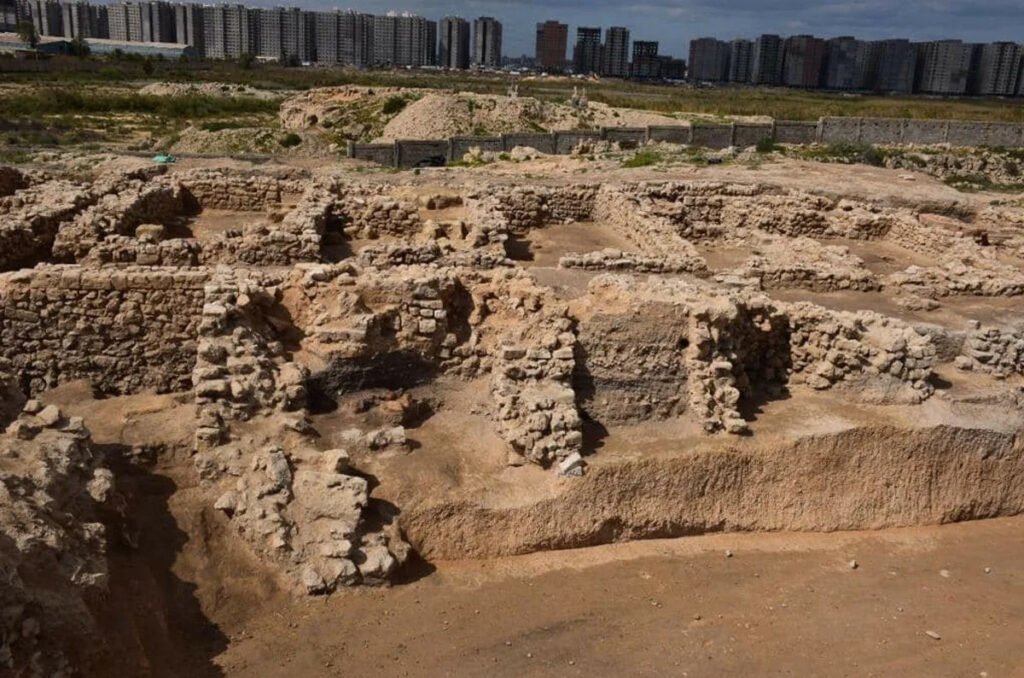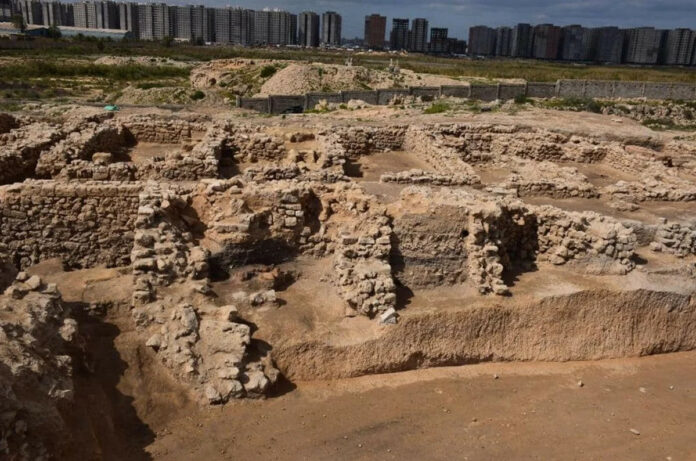In a groundbreaking discovery, archaeologists in Egypt have uncovered an ancient Roman pottery workshop in Tabba Matouh, located in west Alexandria. This workshop, primarily dedicated to the production of amphorae and pottery during the Graeco-Roman period, served as a storage facility for these valuable vessels. Amphorae, distinctive two-handled containers with pointed bottoms, played a crucial role in transporting various liquid and dry products, particularly in the trade of commodities like wine along land and sea routes.

Excavation Reveals Well-Preserved Kilns and Unique Features
The Egyptian Ministry of Tourism and Antiquities reported that the excavation revealed a group of kilns in this workshop, with two of them carved into the rock and one remaining in excellent condition. Mostafa Waziri, Secretary-General of the Supreme Council of Antiquities, provided insights into the discovery, stating, “One of the kilns is in a good state of preservation. It has a vaulted entrance on the western side, through which the potters entered the kiln to stack the amphoras.” Following the completion of stacking, the entrance was sealed with clay and pottery shards.

Evidence of Later Use and Repurposing
Interestingly, the evidence suggests that this workshop saw later use, particularly during the Byzantine period, where it was repurposed for lime production. The northern part of the site served as a lime kiln, reflecting an era after amphora production had ceased. Furthermore, archaeologists uncovered burial sites, indicating that the site was later repurposed as a cemetery during the Middle Ages. One of the graves contained the remains of a pregnant woman.
Multifaceted Findings: Structures, Artifacts, and Coins
The findings from the excavation have been multifaceted. In addition to the kilns, archaeologists unearthed various structures, including a storage room housing cooking utensils and tableware. The site also featured limestone buildings with approximately thirty rooms, likely serving as temporary accommodations for the workers and food preparation areas. Notably, one room displayed signs of a raised platform and terracotta statues, implying it may have been utilized for rituals. These statues included depictions of Harpocrates, the youthful form of the falcon-headed god Horus, along with other ritual objects.

Additionally, one of the rooms contained stoves and preserved fish bones within amphorae, likely indicating that it was used for cooking and selling food. The site also yielded an array of coins, with many bearing the likenesses of historical figures such as Alexander the Great, the god Zeus, and Queen Cleopatra. Archaeologists were able to restore some of these ancient coins.
Continuing Excavations and Future Discoveries
Egyptian authorities have indicated that excavations at the site will continue, with the expectation of revealing more historical and archaeological treasures. This remarkable discovery sheds light on the ancient Roman pottery production process and the various uses of the site throughout history, providing valuable insights into the Graeco-Roman period and beyond.

